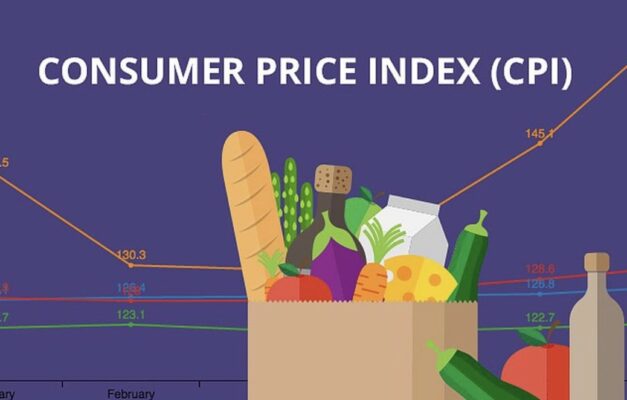In the realm of statistical revelations, the Consumer Price Index (CPI) in the United States revealed a 3.1% year-over-year increase in November, aligning seamlessly with market expectations. Noteworthy is the Core CPI inflation, excluding the volatility of food and energy prices, maintaining stability at 4% during the same period, aligning harmoniously with the market consensus.
Unpacking Market Reactions: Spotlight on USD Index and Bond Yields
The US Dollar Index (USD) experienced initial turbulence in response to the Consumer Price Index readings. Eventually finding stability below the 104.00 threshold. Concurrently, the benchmark 10-year US Treasury bond yield retraced to the 4.2% vicinity, and Wall Street’s primary indices wrapped up the session in positive territory. As Wednesday unfolded, the 10-year yield continued its oscillation around 4.2%, while the USD Index adopted a lateral movement in proximity to 104.00.
Forecasting the Fed’s Decision: Investor Attention on the Dot Plot
The Federal Reserve’s impending decision revolves around maintaining the policy rate within the 5.25%-5.5% range. Investor focus is sharply tuned to the dot plot, seeking clues about the timing of the expected policy shift in the coming year. A comprehensive preview from 10 major banks dismisses any prospects of a rate cut, solidifying market expectations.
Gauging Australia’s Economic Indicators
Transitioning to the early hours of Thursday in the Asian session, the Australian Bureau of Statistics is poised to unveil employment data for November. Simultaneously, the University of Melbourne will release Consumer Inflation Expectations for December. Despite reaching above 0.6600 on Tuesday, the AUD/USD pair relinquished its daily gains, concluding the session on a neutral note. The subsequent trading day saw the pair modestly retracing, hovering around 0.6550.
The EUR/USD Pair and Industrial Production Data
The EUR/USD pair witnessed a surge to a weekly peak exceeding 1.0820, triggered by an immediate response to US inflation data on Tuesday. However, this bullish momentum proved fleeting, and during the European morning, the pair seemed to enter a consolidation phase just below the 1.0800 mark. Eurostat is set to disclose Industrial Production data for October later on Wednesday.
Confronting the UK’s Economic Challenges: The GBP/USD Pair and Contraction in GDP
In the aftermath of a subdued Asian session, the GBP/USD pair faced renewed bearish pressure, concluding the session in negative territory below 1.2550. The UK’s Office for National Statistics unveiled on Wednesday a contraction of 0.3% in Gross Domestic Product (GDP) on a monthly basis for October. Additionally, Industrial Production and Manufacturing Production witnessed declines of 0.8% and 1.1%, respectively, during the same period.
Assessing Japan’s Economic Prospects: The Tankan Index and USD/JPY Movement
A glimmer of optimism emerged from Japan’s data on Friday, indicating an improvement in the Tankan Large Manufacturing Index from 9 to 12 in the fourth quarter. On a less optimistic note, the Tankan Large Manufacturing Outlook retreated from 10 to 8. USD/JPY continued its ascent during the Asian trading hours, inching ever closer to the 146.00 mark by the European morning.
Evaluating Precious Metal Performance: A Comprehensive Analysis of Gold’s Fluctuations
The radiant performance of Gold during the second day of the week culminated in a marginal change. Failing to attract eager buyers as Wednesday dawned. At the time of writing, XAU/USD found itself at its most vulnerable state in three weeks, languishing below the $1,980 threshold. {finish}
Conclusion
In the ever-shifting landscape of global currencies, the revelations of November’s US inflation trends have added layers of complexity. From the Consumer Price Index (CPI) metrics to global market responses and the anticipation of the Federal Reserve’s decisions, each element contributes to the intricate dance of economic dynamics. As we navigate through the nuances of Australia, Europe, the UK, and Japan. Analyze the performance of precious metals like Gold, the global economic stage remains in a state of flux. The coming weeks will undoubtedly bring more twists and turns, shaping the trajectory of global currency trends.
FAQs
How did the US Dollar Index react to the Consumer Price Index readings?
The USD Index experienced initial turbulence but stabilized below the 104.00 threshold.
What is the focus of investor attention regarding the Federal Reserve’s decision?
Investors are keenly focused on the dot plot, seeking clues about the timing of the impending policy shift.
What were the key economic indicators for the UK in October?
The UK witnessed a contraction of 0.3% in GDP, with Industrial Production and Manufacturing Production declining by 0.8% and 1.1%, respectively.
How did the GBP/USD pair perform in the aftermath of the Asian session?
The GBP/USD pair faced renewed bearish pressure, concluding the session in negative territory below 1.2550.
What factors contributed to the EUR/USD pair’s surge in the European morning?
The EUR/USD pair experienced a surge, surpassing 1.0820, triggered by the immediate response to US inflation data on Tuesday.














